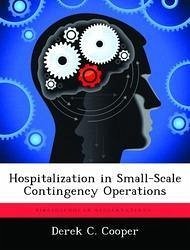This thesis examines the US Army Interim Force needs with regard to deployable hospitalization during small-scale contingency (SSC) operations and the Army Medical Department's (AMEDD) ability to adequately meet the requirements. Under the current medical reengineering (MRI) plan the AMEDD appears to be postured well for supporting major theater wars (MTW). Some will argue that if an MRI structure can support the worst-case scenario--two nearly simultaneous MTWs--then clearly it could adequately support a number of SSCs. In analyzing this argument, this thesis focuses primarily on the characteristics and capabilities that echelon-III hospital units need in order to deploy and support SSCs under present and emerging conditions. The study analyzes relevant doctrine, historical examples, and future concepts and selects the most critical characteristics required of an echelon-III hospital to be relevant in support of SSC operations. The study then evaluates four different hospital platforms and their ability to meet the desired goals of the critical characteristics. Finally, based on the assessment, the study provides recommendations for the Army's development of echelon-III hospitals in the future.
Hinweis: Dieser Artikel kann nur an eine deutsche Lieferadresse ausgeliefert werden.
Hinweis: Dieser Artikel kann nur an eine deutsche Lieferadresse ausgeliefert werden.








